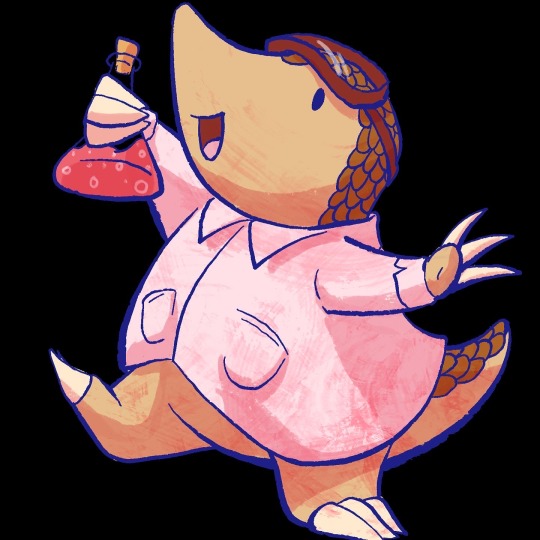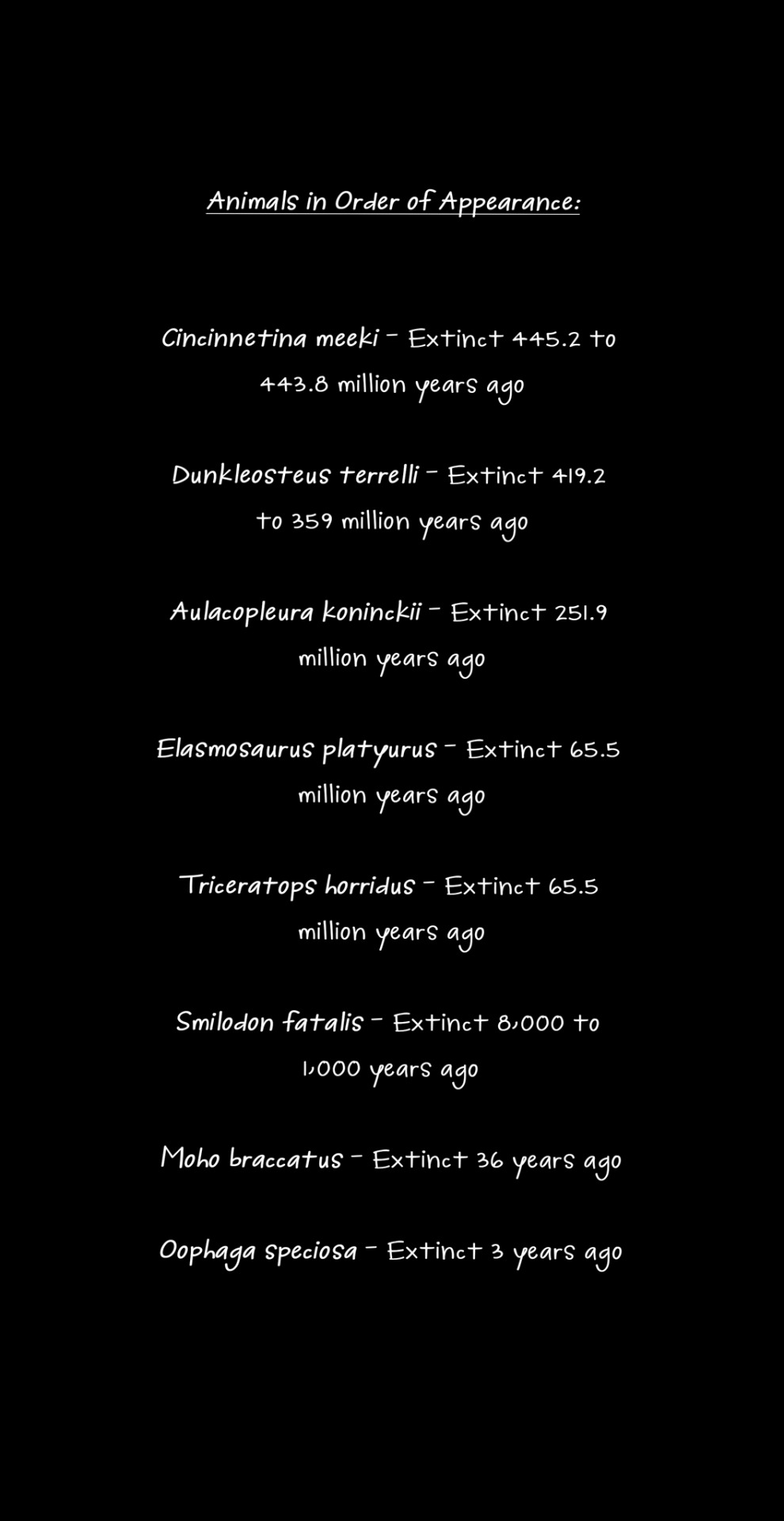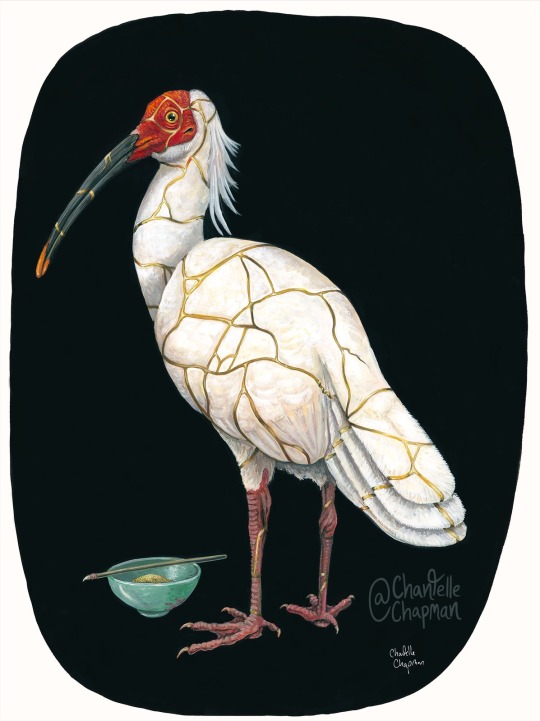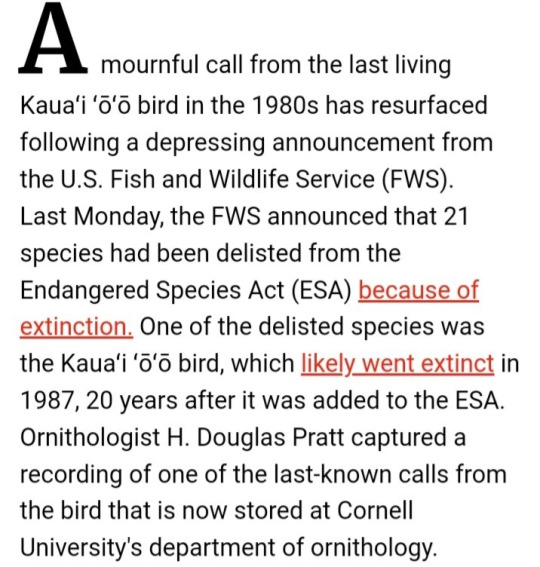#endangered and extinct species
Text
Cbse class 7 Geography handnotes on Natural vegetation and wildlife.
Check link to download the free pdf










#nature#education#notes#school#youtube#students#studyblr#latitudes#homeschool#naturelandscape#naturelovers#endangered and extinct species#forest#wildlife#grassland#conservation#ecosystem#biodiversity#flora#native fauna#flora and fauna#greenery#natural habitat#landscape#new studyblr#college studyblr#study blr#blr#studygram#study aesthetic
5 notes
·
View notes
Text



I created plushies I’d like to produce one day! Like, I drew seam lines and turn arounds already. One day if I had a stable kickstarter or following…
#axolotl#pangolin#cute animals#plushies#illustration#plush artist#custom plush#digital art#digital illustration#artists on tumblr#children’s illustration#artist#product design#product illustration#endangered and extinct species#endangered animals#rare animals#doctor#scientists#chemistry#stem#blazingfire909 art
2 notes
·
View notes
Text
A study that just came out demonstrates that outdoor cats are known to prey on over two thousands species of wild animal, from mammals to birds to insects. That includes 347 species that are endangered, threatened or otherwise of concern, and they've been a key factor of the permanent extinction of over 60 species. And while cats may not always bring home what they catch, chances are if your cat is allowed to roam unsupervised outside, they're killing your local wildlife.
Why is this so important? Worldwide, wild animal populations have decreased in number by 69% in the past fifty years; that means that in my lifetime (born in 1978), the sheer number of wild animals in the world has been decreased by over half. Even "common" wild species are less numerous than before. While habitat population is the single biggest cause of species endangerment and extinction overall, outdoor and indoor/outdoor cats are a significant cause as well. In fact, they are the single biggest cause of human-caused mortality in wild birds.
Most importantly, it's very, very simple to fix this problem: keep your cats indoors, and spay and neuter them. If your cat is bored, they need more enrichment, and there are plenty of ways to make your home more exciting for them, from bringing home cardboard boxes for them to explore, to playing with them more often. If you want your cat to get some outdoor enrichment, leash train them (yes, it can be done!) If you have the space and resources, build them a catio where they can be safe from outdoor dangers like predators and cars, while also keeping local wildlife safe from them.
If you just give into their whining and pawing at the door, then they know that that's what they have to do to get their way; I know it's a tough transition, but it's worth it in the end for everyone involved. Cats are domesticated, which means they are not native anywhere in the world; there are exactly zero ecosystems in which they belong, save for the safety of your home. It is your responsibility to give them an enriching environment without taking the shortcut of letting them go wreak havoc outside.
#cats#outdoor cats#feral cats#nature#wildlife#animals#ecology#environment#conservation#science#scicomm#birds#endangered species#extinction#domesticated animals#domestication#biology#animal behavior#animal welfare
8K notes
·
View notes
Text




text from porter robinson's "goodbye to a world"
every single animal in this comic is extinct. it's not too late for the ones that are left.
edit: thanks @mudcrabmassacre for the correction, smilodon fatalis did not in fact go extinct in 1023 AD. the actual prediction is around 10,000 years ago - I think i may have missed a zero or two.
#comic#art#environment#conservation#animals#extinct species#fossils#climate change#dinosaurs#ancient life#endangered species#endangered animals#comics#artists on tumblr#digital art#digital comic#my-art
10K notes
·
View notes
Text
Manta Ray Illustration
Hello Everyone. I have just signed in to Tumblr. This one is going to be my first post. Hope you'll love my works. Thank You

A flock of Manta Rays in the blue ocean. these gentle giants are endangered now
#sea life#stingray#manta ray#oceanlife#ocean animals#endangered and extinct species#save the ocean#save the animals#save the planet#nature#wild life
1 note
·
View note
Text
Extinctions, shrinking habitat spur 'rewilding' in cities
Extinctions, shrinking habitat spur ‘rewilding’ in cities
DETROIT — In a bustling metro area of 4.3 million people, Yale University wildlife biologist Nyeema Harris ventures into isolated thickets to study Detroit’s most elusive residents — coyotes, foxes, raccoons and skunks among them.
Harris and colleagues have placed trail cameras in woodsy sections of 25 city parks for the past five years. They’ve recorded thousands of images of animals that emerge…
View On WordPress
#Biology#Birds#Botany#Coyotes#Endangered and extinct species#Environmental laws and regulations#Freshwater pollution#Government and politics#Government regulations#Pollution law#Rodents#Science#Water environment#water pollution#Water quality
0 notes
Text

Two hundred years ago, the wetlands of Japan rustled with pink-tinged feathers. Tall, pale birds stepped carefully through reeds and iris, hunting small fish, crabs, and frogs.
Nipponia nippon, it would be dubbed by the national ornithological society, a bird emblematic of its country. The Crested Ibis. The Toki. The Peach Flower Bird.
Marshes slowly changed to rice fields, with farmers who resented the toki for ruining crops; to kill the birds was outlawed, so children chased them from the fields, singing warnings.
The doors of the country were pried open. Laws changed. Farmers bought their first guns, their sights set on birds who were no longer protected. The toki, the red-crowned crane, and many others began to suffer. But the worst was yet to come.
Pesticides are indiscriminate killers. The poison sprayed to kill a beetle can travel up the foodchain, toppling a cascade of larger animals, or affecting their ability to reproduce. It was reckless pesticide use that nearly wiped out the Bald Eagle. In the rice fields, the peach-flower-bird had little chance.
In 1981, Japan’s last five living toki were removed from a wild that had become too dangerous for them.
I tell a lot of sad stories here, about mistakes we’ve made and animals we’ve lost. This isn’t one of those. This is a story about one of those precious times when we were able to fix the things we’d broken.
A joint effort between Japan & China, and the discovery of seven more birds in that country, led to a successful breeding program, which in 2008 saw the first ibises fly free again in Japan. Today, at least 5000 toki exist in the world.
The last wild-born toki, one of those captured in 1981, lived almost long enough to see her species’ return. Reaching the equivalent age of a centenarian human, she died in 2003—not of old age, but injury after throwing herself against her cage door.
Her name was ‘Kin’. ‘Gold’.
Mended things can never be as whole as they once were. There will always be cracks that show, weak spots that remain vulnerable. Yet, like the shining seams of a kintsugi piece, these scars speak an important truth: here is a thing that someone chose to save; handle with care.
The title of this painting is ‘Restoration’. It is gouache on 22x30 inch watercolor paper
#bird art#endangered species#extinct in the wild#toki#crested ibis#extinction stories#series: we try to fix what we’ve broken
4K notes
·
View notes
Text
"A 2019 sighting by five witnesses indicates that the long-extinct Javan tiger may still be alive, a new study suggests.
A single strand of hair recovered from that encounter is a close genetic match to hair from a Javan tiger pelt from 1930 kept at a museum, the study shows.
“Through this research, we have determined that the Javan tiger still exists in the wild,” says Wirdateti, a government researcher and lead author of the study.
The Javan tiger was believed to have gone extinct in the 1980s but only officially declared as such in 2008...
Ripi Yanuar Fajar and his four friends say they’ll never forget that evening after Indonesia’s Independence Day celebration in 2019 when they encountered a big cat roaming a community plantation in Sukabumi, West Java province.
Immediately after the brief encounter, Ripi, who happens to be a local conservationist, reached out to Kalih Raksasewu, a researcher at the country’s National Research and Innovation Agency (BRIN), saying he and his friends had seen either a Javan leopard (Panthera pardus melas), a critically endangered animal, or a Javan tiger (Panthera tigris sondaica), a subspecies believed to have gone extinct in the 1980s but only officially declared so in 2008.
About 10 days later, Kalih visited the site of the encounter with Ripi and his friends. There, Kalih found a strand of hair snagged on a plantation fence that the unknown creature was believed to have jumped over. She also recorded footprints and claw marks that she thought resembled those of a tiger.
Kalih then sent the hair sample and other records to the West Java provincial conservation agency, or BKSDA, for further investigation. She also sent a formal letter to the provincial government to follow up on the investigation request. The matter eventually landed at BRIN, where a team of researchers ran genetic analyses to compare the single strand of hair with known samples of other tiger subspecies, such as the Sumatran tiger (Panthera tigris sumatrae) and a nearly century-old Javan tiger pelt kept at a museum in the West Java city of Bogor.
“After going through various process of laboratory tests, the results showed that the hair sample had 97.8% similarities to the Javan tiger,” Wirdateti, a researcher with BRIN’s Biosystemic and Evolutionary Research Center, said at an online discussion hosted by Mongabay Indonesia on March 28.
The discussion centered on a study published March 21 in the journal Oryx in which Wirdateti and colleagues presented their findings that suggested that the long-extinct Javan tiger may somehow — miraculously — still be prowling parts of one of the most densely populated islands on Earth.
Their testing compared the Sukabumi hair sample with hair from the museum specimen collected in 1930, as well as with other tigers, Javan leopards and several sequences from GenBank, a publicly accessible database of genetic sequences overseen by the U.S. National Institutes of Health.
The study noted that the supposed tiger hair had a sequence similarity of 97.06% with Sumatran tigers and 96.87% with Bengal tigers. Wirdateti also conducted additional interviews with Ripi and his friends about the encounter they’d had.
“I wanted to emphasize that this wasn’t just about finding a strand of hair, but an encounter with the Javan tiger in which five people saw it,” Kalih said.
“There’s still a possibility that the Javan tiger is in the Sukabumi forest,” she added. “If it’s coming down to the village or community plantation, it could be because its habitat has been disturbed. In 2019, when the hair was found, the Sukabumi region had been affected by drought for almost a year.” ...
Didik Raharyono, a Javan tiger expert who wasn’t involved in the study but has conducted voluntary expeditions with local wildlife awareness groups since 1997, said the number of previous reported sightings coupled with the new scientific findings must be taken seriously. He called on the environment ministry to draft and issue a policy on measures to find and conserve the Javan tiger.
“What’s most important is the next steps that we take in the future,” Didik said."
-via Mongabay, April 4, 2024
#tigers#tiger#endangered species#extinction#conservation#environment#extinct animals#de extinction#indonesia#java#big cats#wild animals#good news#hope
615 notes
·
View notes
Text
Australia losing animals, natural land as environment decays | Business News
Australia losing animals, natural land as environment decays | Business News
If you know of local business openings or closings, please notify us here.
PREVIOUS OPENINGS AND CLOSINGS
· Jimmy’s Barbershop in Allentown has moved to 822 N. 19th Street
· Air Products and Chemicals Inc.’s chosen warehouse developer, Prologis Inc., will have to wait until July 13 for a final decision by Upper Macungie Township’s zoning hearing board on 2.61 million square feet of warehouses.
·…

View On WordPress
#air pollution#air quality#animals#apmediaapi#Australia#australia-climate#business#climate#Climate and environment#climate change#dcc#decays#Elections#emissions laws and regulations#emissions reduction#endangered and extinct species#environment#environmental concerns#environmental conservation and preservation#environmental laws and regulations#general news#government and politics#Government regulations#land#land environment#Legislature#losing#Natural#News#Parliamentary elections
0 notes
Text



This was quite haunting to read.
#animals#birds#Kauaʻi ʻōʻō#Kauaʻi#hawaii#hawai'i#extinction#extinct animals#extinct species#news#science#zoology#biology#Endangered Species Act#ESA#recently extinct#Putting a bunch of tags in this because I really want this story to be known. It made me so sad.
439 notes
·
View notes
Text
Endangered Fireflies & Conservation
Fireflies are at risk of extinction due to habitat destruction, light pollution, and pesticide use. Recovery efforts started in 2023 for the 18 endangered species in North America. Almost 1 in 3 firefly species in the US and Canada are threatened with extinction.
Scientists have yet to prove the effectiveness of these steps due to limited research on firefly populations. However, there is evidence suggesting that human activities may contribute to the decline of fireflies. So, here's what you can do:
Turn off outside lights during nighttime hours
Allow logs and leaves to naturally decompose in your yard
Incorporate areas of water into your landscaping
Refrain from using pesticides in your yard
Avoid excessive mowing of your lawn
Plant native tree species in your yard.
Please take a moment to explore resources related to firefly conservation:
Discover articles from the Xerces Society on firefly conservation: https://www.xerces.org/endangered-species/fireflies
Watch a video from the Canadian Permaculture Legacy on saving fireflies: https://www.youtube.com/watch?v=McjHyQMf5eQ
Learn more about the Firefly Conservation & Research organization: http://www.firefly.org/
Explore their articles on how you can contribute to firefly conservation: https://www.firefly.org/how-you-can-help.html
If you have spotted fireflies in your area, please report your sightings here: https://www.firefly.org/firefly-sightings.html
#fireflies#firefly#lightning bug#bugs#insects#conservation#endangered species#north america#Xerces Society#Fire fly#extinction#environment#cottagecore#gardening#permaculture#agriculture#light pollution#Canada#United States#habitat destruction#habitat loss#restoration#glow worm
164 notes
·
View notes
Text

Tasmania , just a blink of an eye ago
September 7th, 1936. The last captive thylacine, a male nicknamed "Benjamin", died from unknown reasons at the Hobart´s Beaumaris Zoo.
Two months later, thylacines became a legally protected species.
In 1982, park ranger Hans Naarding was surveying in north-west Tasmania when he stood for several minutes with his torchlight fixed on a thylacine. It is the last credible sighting of the animal in the wild.
That same year, the IUCN declared the Thylacine, commonly known as the "Tasmanian tiger", officially extinct.
Photos, videos and sightings have been regular since then, none really worthy of consideration as late evidence of the species' late survival.
Companies of questionable morality have promised to bring the species back from extinction through cloning and genetic engineering.
But the thylacine is gone forever. That's the hard truth.
We can try to convince ourselves that somewhere, hidden and far away from humans, they are still alive. We can try to convince ourselves that our advanced technology will reverse the mistakes of the past and change the natural order.
But the thylacine is gone, and that will not change.
This sad story leaves us with an important lesson: We must put all our efforts and resources into conserving the species that remain in our world.
May the Thylacine always remain an eternal reminder of what extinction means.
#zoology#animals#art#nature#wildlife#paleoart#endangered species#tasmania#australia#thylacine#tasmanian tiger#mammal#tasmanian devil#animal art#animal behavior#extinction
281 notes
·
View notes
Text








#ai art#ai generated#bnwo#ai artwork#ebony women#sexy ebony#black beauty#ebony#bnwo propaganda#extinction#endangered species
81 notes
·
View notes
Text
That's so cool! And they found a few of them, and they're now growing seedlings in greenhouses for eventual replanting!
Quercus tardifolia is a relic species leftover from when the climate was much cooler and wetter in the past, and can only really live in a few high-elevation spots in Texas. It's definitely still at risk of extinction due to increasing heat and drought caused by climate change, but the discovery means this species still has a chance.
#oak#oak trees#Quercus#Quercus tardifolia#Lazarus species#endangered species#extinction#trees#plants#botany#nature#climate change#global warming
4K notes
·
View notes
Text

During the last Ice Age, what is now part of the Rio Grande Valley was a dense swampy marshland that was home to many unique and now extinct animals, such as the powerful Colombian Mammoth, the Giant Gopher Tortoise, or the cunning Saber-Toothed Tiger. Many modern animals had far vaster ranges and were more plentiful, such as the condor or the whooping crane. By the end of the Pleistocene, as the ice began to recede, and the first Paleo Native Americans established themselves within the continent, many of these creatures died out. Many more today are still at risk of being nothing more than a memory in Texas' Natural History.
#paleoart#paleontology#digital art#artist on tumblr#ecology#rio grande valley#rgv956#natural history#pleistocene#animals#wildlife#texas#conservation#biodiversity#endangered species#extinct animals
935 notes
·
View notes
Note
They just released the first 8 Spix's macaws back to their native range in Brazil after 22 years of them being gone from the wild, if you want to look into it!
Thanks so much for sending this in and giving be an excuse to gush about it!
Honestly I think the heart of this conservation story can be summed up by the very first line of the article:
"The Spix’s little blue macaw — extinct in the wild for 22 years — now flies free again in its natural habitat in Brazil, thanks to decades of research and effort by hundreds of scientists, conservation biologists, veterinarians, aviculturists and indigenous peoples."
So many people from so many different backgrounds cared enough to invest their time, money, and knowledge--often with no or very little financial compensation--to bring these birds home. Many whose names and contributions we will never know.
Eight birds were released earlier in June and 12 more are set to be released in December. This is only the beginning of the reintroduction phase of a captive breeding and reintroduction plan that has been in the making for decades. Parrots are challenging animals to reintroduce to the wild because they are so intelligent and social, but conservationists have learned a lot from both failed and successful parrot reintroductions in the past. I'm wishing all the luck in the world to those first eight birds--they have been given the best shot possible at making it in the wild.
This is one of those conservation stories that makes it all worth it. After 22 years, there will finally be little blue parrots in the Brazilian forest again.

(For those who are wondering, yes, this is what the movie Rio was based on. Rio brought an immense amount of attention and support to the Spix's macaw reintroduction efforts)
#bird conservation#parrot conservation#good news#hope#conservation#biodiversity#spix's macaw#parrots#zoos prevent extinction#captive breeding#endangered species#reintroduction#ask#submission#environment
2K notes
·
View notes